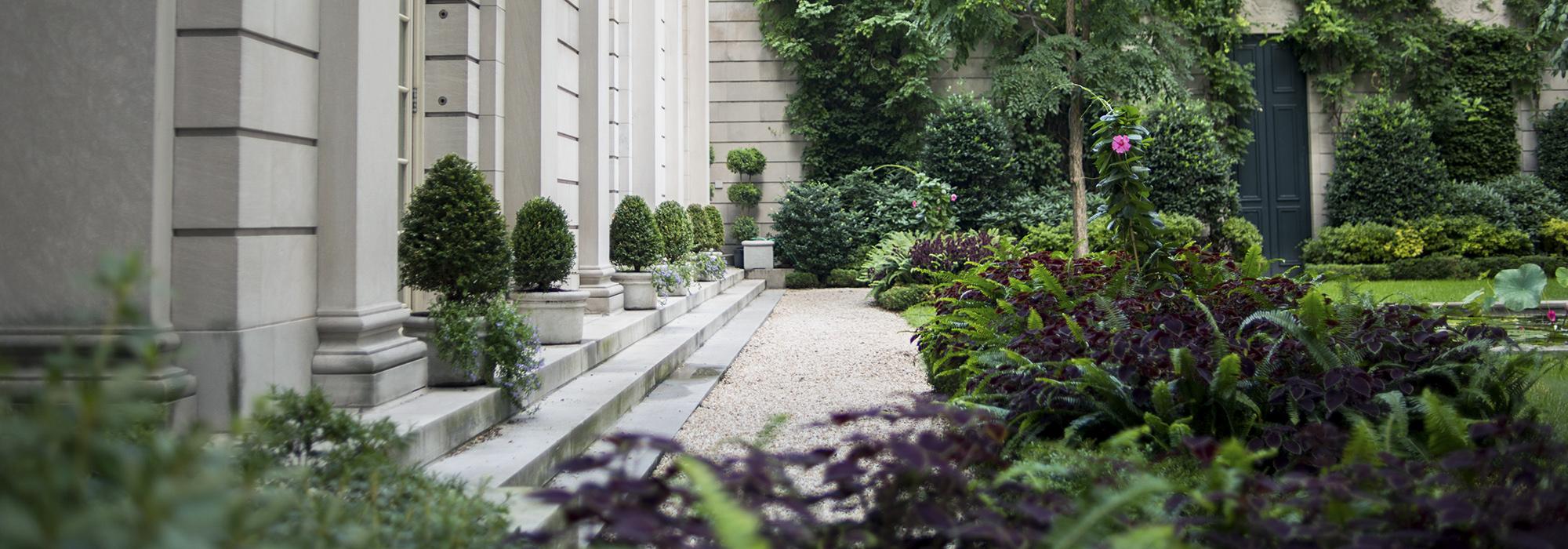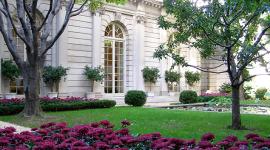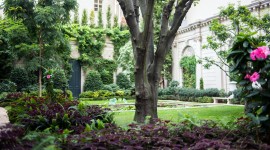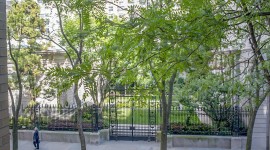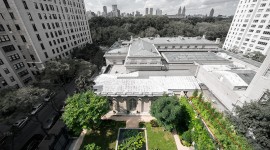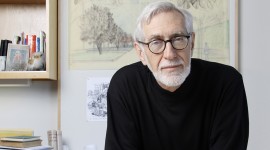Frick Collection Abandons Current Expansion Plans – Russell Page-designed Garden is Saved
Media Contact: Nord Wennerstrom | T: 202.483.0553 | M: 202.225.7076 | E: nord@tclf.org
The Landslide 2014 site is one of three rare surviving U.S. public commissions
(Washington, DC – June 3, 2015) – The Cultural Landscape Foundation (TCLF) welcomed news that the Frick Collection in New York City has abandoned its current expansion plans, which would have destroyed the East 70th Street Garden designed by the internationally influential British landscape architect Russell Page (1906-1985). The garden is one of only three of Page’s surviving public U.S. commissions and is considered by the New York Times to be one of his “most important works.” The garden was listed on TCLF’s Landslide 2014: Art and the Landscape, a thematic compendium of threatened and at-risk landscapes and landscape features.
“Sanity has prevailed and Russell Page’s brilliantly designed garden at the Frick has been saved,” said Charles A. Birnbaum, president & CEO of The Cultural Landscape Foundation, adding, “this is all the more significant because works of landscape architecture are often overlooked, their artistic and cultural significance is either unknown or not understood, and they’re seen as open space usable for expansions.”
The Frick Collection’s proposed expansion, announced in June 2014, immediately raised concerns, though the garden was little mentioned and Page’s name was absent. Birnbaum’s June 30, 2014 Huffington Post article Here's What's Missing in the Debate Over the Frick Collection's Proposed Expansion first raised the issue, and his August 26, 2014 That 'Temporary' Frick Garden - It Was Created to Be Permanent undermined one of the Frick’s key talking points, that the garden was temporary. Significantly, in his July 30, 2014 article The Case Against a Mammoth Frick Collection Addition, New York Times architecture critic Michael Kimmelman wrote “Great public places and works of landscape architecture deserve to be treated like great buildings.”
A coalition led by Unite to Save the Frick, with whom TCLF worked, orchestrated a broad-based opposition to the expansion, bringing in artists, architects and other significant individuals and organizations. The New York Chapter of the American Society of Landscape Architects, the Municipal Art Society, and other cultural institutions also weighed in. Everett Fahy, who as the Frick’s director in the 1970’s commissioned Page to create the garden, decried the “awful” expansion in an extensive interview with Bloomberg News Executive Editor Manuela Hoelterhoff.
Page is currently the subject of a retrospective at the Garden Museum in London through June 21, 2015.
About The Cultural Landscape Foundation
The Cultural Landscape Foundation (TCLF), established in 1998, is a 501(c)3 non-profit foundation that provides people with the tools to see, understand and value landscape architecture, its practitioners, and our cultural landscape legacy in the way many people have learned to do with buildings and their designers. Through its Web site, lectures, outreach and publishing, TCLF broadens the support and understanding for cultural landscapes nationwide to help safeguard our priceless heritage for future generations. TCLF makes a special effort to heighten the awareness of those who impact cultural landscapes, assist groups and organizations working to increase the appreciation and recognition of cultural landscapes, and develop educational tools for young people to better connect them to their cultural landscape environs.



